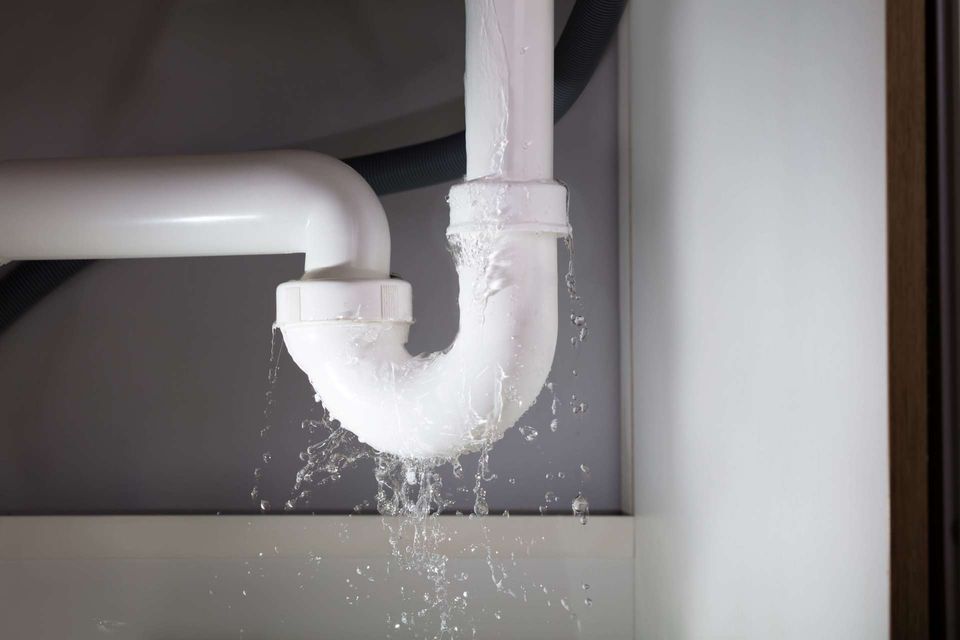6 Ways to Discover Concealed Water Leakages in Your Residence
Schedule A Service CallWe've discovered the article relating to Finding hidden leaks down the page on the web and figured it made perfect sense to discuss it with you here.

Early discovery of leaking water lines can minimize a potential catastrophe. Some little water leaks might not be visible.
1. Take A Look At the Water Meter
Every house has a water meter. Checking it is a guaranteed manner in which assists you find leaks. For starters, turn off all the water sources. Ensure nobody will purge, utilize the tap, shower, run the washing machine or dish washer. From there, most likely to the meter and watch if it will alter. Because no one is utilizing it, there ought to be no activities. That indicates a fast-moving leakage if it moves. If you discover no changes, wait an hour or two as well as examine back once more. This suggests you might have a slow-moving leakage that could even be underground.
2. Examine Water Usage
Evaluate your water bills and also track your water usage. As the one paying it, you should see if there are any discrepancies. If you find sudden changes, regardless of your usage being the same, it suggests that you have leakages in your plumbing system. Keep in mind, your water bill must drop under the exact same range on a monthly basis. A sudden spike in your expense indicates a fast-moving leakage.
On the other hand, a stable increase on a monthly basis, despite the exact same practices, reveals you have a slow leakage that's additionally gradually rising. Call a plumber to extensively examine your home, specifically if you really feel a warm area on your floor with piping underneath.
3. Do a Food Coloring Examination
When it comes to water usage, 30% comes from commodes. If the color somehow infiltrates your bowl during that time without flushing, there's a leakage in between the storage tank and dish.
4. Asses Outside Lines
Do not forget to inspect your outside water lines also. Ought to water seep out of the link, you have a loosened rubber gasket. One tiny leakage can waste tons of water as well as increase your water expense.
5. Examine the situation as well as evaluate
Property owners must make it a behavior to check under the sink counters and even inside cupboards for any bad odor or mold and mildew development. These two red flags suggest a leakage so timely interest is needed. Doing routine inspections, also bi-annually, can conserve you from a significant issue.
Check for stainings and deteriorating as many appliances as well as pipelines have a life expectancy. If you think leaking water lines in your plumbing system, do not wait for it to escalate.
Early detection of dripping water lines can alleviate a possible calamity. Some tiny water leaks might not be noticeable. Checking it is a surefire means that assists you discover leakages. One small leakage can waste heaps of water and also spike your water expense.
If you believe leaking water lines in your plumbing system, don't wait for it to rise.
How to Know If Your Home Has a Hidden Leak
Water Meter Reveals Inexplicable Water Usage
If you’d like to test whether or not there’s a leak somewhere in your home, you can do this using your water meter. Here is how to conduct the test:
Don’t use any water in your home for at least 30 minutes; this also means not turning on faucets or water-using appliances.
Go outside, and check your water meter for activity.
If your water meter shows that there was activity, even though no one was using any water, this proves that there is a leak in your home.Visible Mold or Mildew Growth
Leaks behind walls create moist, dark environments that allow mold and mildew to grow and thrive. Eventually, you might see mold growth forming on the wall closest to a hidden leak.
If mold is growing in an area that receives a high amount of moisture, such as a bathroom, it may simply be an indication that better ventilation is needed. However, if you see mold growth on a wall or the ceiling in an area where you would not expect, you probably have a hidden leak.
Musty, Mildew Odor
Sometimes you might not be able to see the mold or mildew that is growing as a result of a leak. However, the smell can give the problem away just as easily. If you catch a whiff of something musty, there’s a good chance that old water is collecting somewhere in your home that you can’t see.
Stained/Warped Walls, Ceilings, or Floors
When your home soaks up water, a variety of red flags can become visible, including ceiling stains, bubbling drywall, warped walls, and sagging floors. While these issues can be caused by excess humidity, they can also be signs that a pipe or plumbing connection has started leaking behind your walls.
Inexplicably High Water Bill
After a while, you get a general sense for what your water bill should be. If you own a pool or sprinkler system, your bill will tend to be higher during summer. However, if you receive a water bill that seems especially high, and you can’t figure out what caused it, then you may have a hidden leak somewhere that’s increasing your bill.
https://www.plumbingjoint.com/blog/2019/july/how-to-know-if-your-home-has-a-hidden-leak/

As a serious reader on Finding hidden leaks, I think sharing that editorial was a good thing. If you liked our post plz remember to pass it around. Many thanks for your time. Visit again soon.